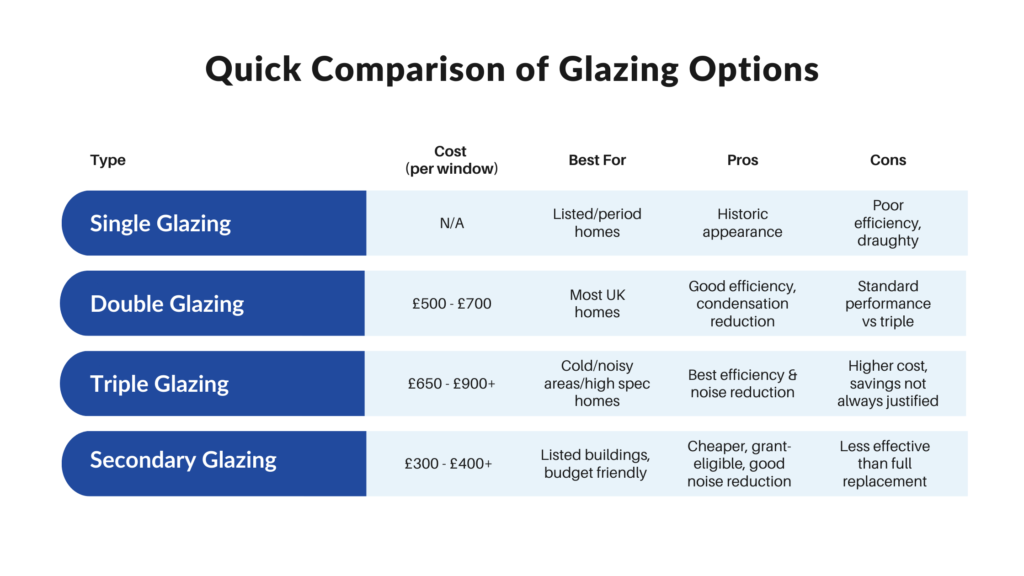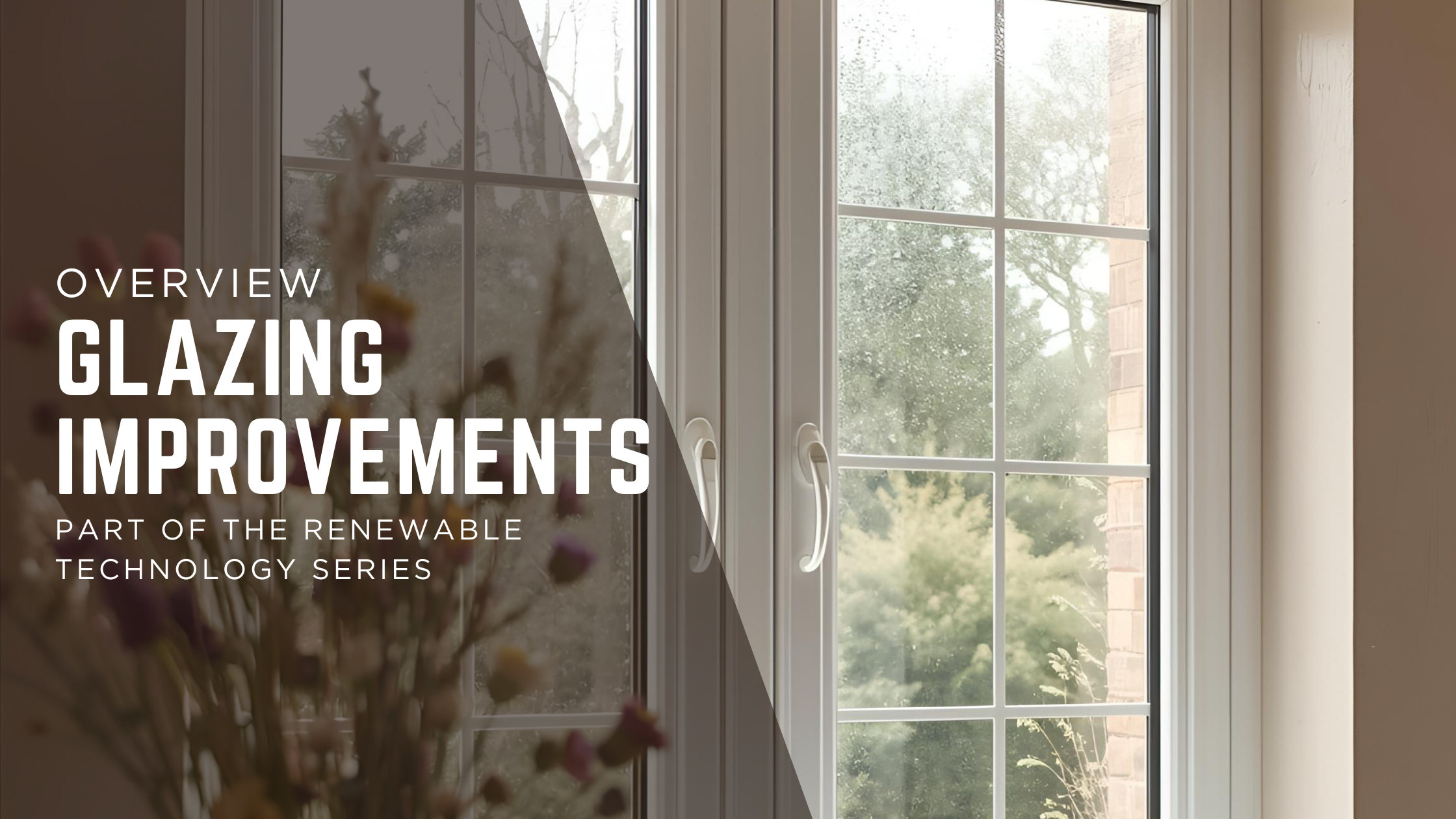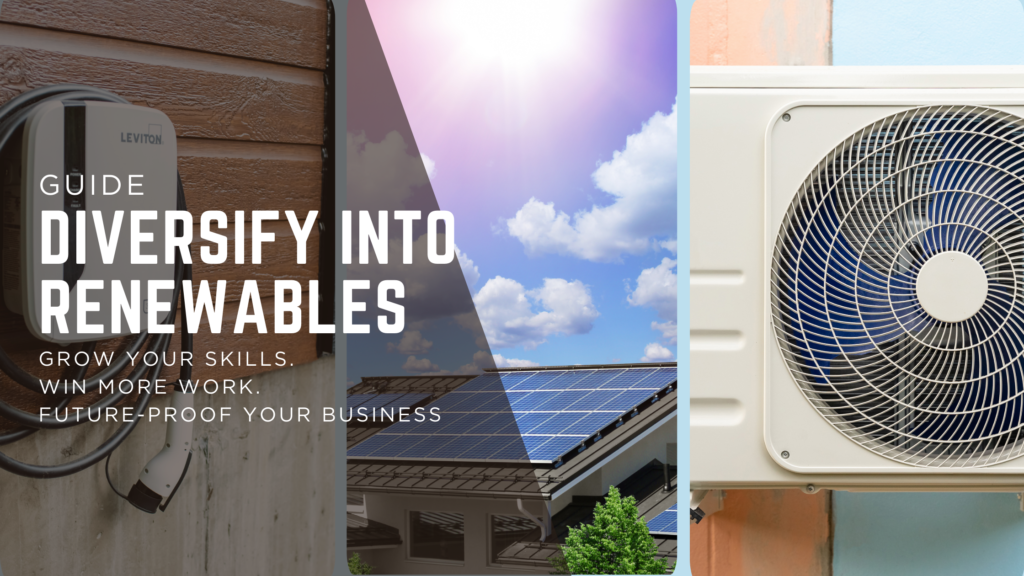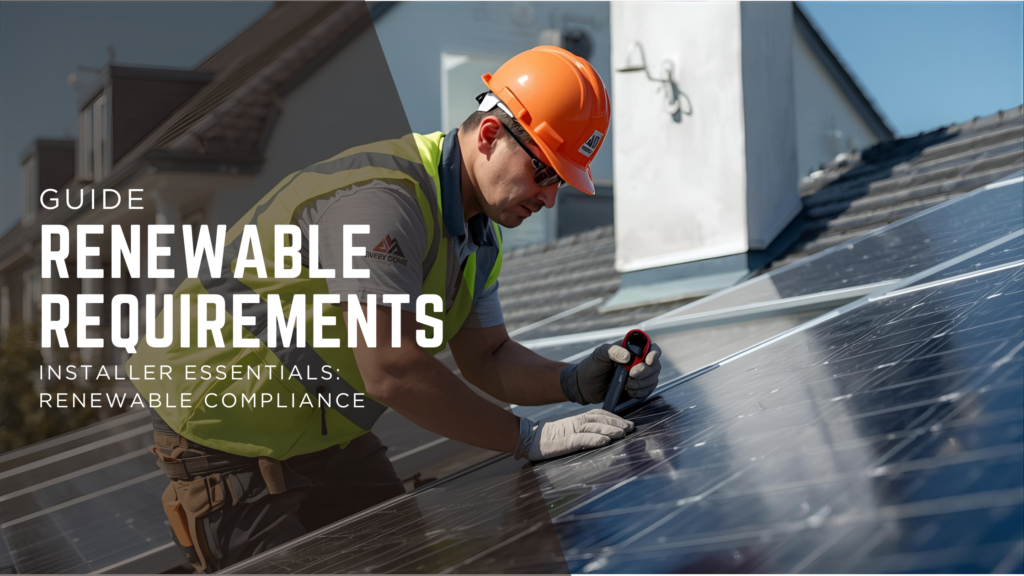Windows are one of the biggest sources of heat loss in a home. If they’re old or single-glazed, you might as well be throwing money out of the glass. Upgrading your glazing is one of the simplest ways to keep warmth in, cut your bills, and make your home more comfortable all year round.
This guide explains the types of glazing improvements available, the costs and savings, what grants might apply, and whether it’s the right move for your home.
What Are Glazing Improvements?
Glazing improvements simply mean upgrading your windows so they perform better at keeping heat in and cold out. Over the years, glazing has evolved — and not all options are equal. Here are the main types, and when they make sense for your home:

Single glazing
Just one pane of glass.
Very poor insulation — heat escapes quickly, and windows feel cold to the touch.
Still found in older properties, especially period homes or those in conservation areas.
Generally considered outdated, unless you’re in a listed property where replacements are restricted.
Double glazing
Two panes of glass with a sealed gap between them, usually filled with an inert gas such as argon to slow heat transfer.
Now the standard in the UK — most homes built since the 1980s already have it.
Cuts heat loss by up to 50% compared with single glazing.
Reduces condensation on the inside of windows.
Typical cost: £500–£700 per window, or around £7,000–£10,000 for a whole house.
Triple glazing
Three panes of glass with two insulating gaps.
Offers even better thermal efficiency and noise reduction than double glazing.
Costs more — typically 20–30% higher than double glazing.
Best suited for colder climates, noisy urban areas, or homes aiming for very high energy ratings (such as new builds).
Secondary glazing
An additional pane fitted on the inside of an existing window.
Ideal for listed buildings or conservation areas where replacing original windows isn’t permitted.
Cheaper than full replacement — often £300–£400 per window.
Makes a noticeable difference to heat loss and noise reduction.
Sometimes eligible for funding through schemes such as ECO4 or GBIS.
Modern glazing upgrades
Many units now include low-emissivity (low-e) coatings — invisible layers that reflect heat back into your rooms while still letting sunlight in.
Frame choice also matters:
uPVC – affordable, low-maintenance, widely used.
Aluminium – slim frames, modern look, very durable.
Timber – traditional appearance, strong insulator, but higher maintenance.
Your installer will advise on which frame type suits your property, budget, and style best.
How Glazing Improves Your Home
Upgrading your glazing isn’t just about swapping old windows for shiny new ones. The improvements you’ll notice day to day can make a real difference to how your home feels — and to your energy bills.
Energy efficiency
Double and triple glazing act like an insulating blanket. They keep more of the heat you’ve paid for inside your home instead of letting it leak out through the glass. That means your boiler or heat pump doesn’t have to work as hard, which lowers your heating bills. Over time, that adds up to significant savings.
Comfort
If you’ve ever avoided sitting near a window because of a draught, you’ll know how uncomfortable old glazing can be. Modern glazing eliminates cold spots and draughts, so the whole room feels evenly warm. It’s the difference between shivering on the sofa and actually relaxing.
Noise reduction
Live near a busy road, flight path, or railway line? New glazing can cut external noise dramatically. Double glazing helps, but triple or secondary glazing can make a real difference in noisy areas — giving you peace and quiet indoors, even if the outside world is busy.
Condensation control
Single-glazed and older windows often mist up on cold mornings. That’s because the inside surface of the glass gets so cold that water vapour condenses on it. Modern glazing keeps the inside surface warmer, which means less condensation and a lower risk of damp or mould building up around your frames.
Security
Glazing isn’t just about comfort — it’s also about safety. Today’s windows use toughened or laminated glass, multipoint locking systems, and strong frames, making them much harder to break into than older single-glazed units. For many homeowners, this added peace of mind is just as important as the energy savings.
Costs, Savings & Grants
Upgrading your windows can carry a noticeable upfront cost — but the savings over time and added comfort often make it a worthwhile investment. Here’s a more detailed look, using real UK data, so you can judge what it might mean for your home.
Costs
Per-window costs vary widely, depending on frame type, style, glazing type, and location. For example, double glazing in the UK averages about £425–£700 per standard uPVC casement window.
More complex windows, such as sash, bay, bow or large custom frames can cost significantly more. For example, a bay window or bow window can run from £1,500 to over £5,000 depending on size and materials.
Full-house double glazing for a typical semi-detached property is often in the region of £8,000–£15,000 depending on the number of windows, frame material, and glazing specification.
Triple glazing adds a premium — often around 20-30% extra when compared to a similar double-glazed unit. The extra cost includes better insulating glass, more complex frames, and often more robust installation.
Savings
If you replace single glazing with A-rated double glazing in a typical semi-detached home, you might save around £120-£155 per year in energy bills.
Older double glazing upgraded to modern high-spec double glazing can bring smaller but still meaningful savings — around £25-£30 per year in some homes.
In Great Britain, Energy Saving Trust gives figures that upgrading single-glazed windows to A-rated double glazing may save £140 per year, and slightly more in Northern Ireland.
Savings also depend heavily on your home: factors can include the number of windows, how draughty your frames are, how much you heat, external climate or noise exposure. If your windows face north or are large, savings tend to be greater.
Grants & Funding Support
ECO4 / GBIS: These schemes may fund glazing improvements, particularly secondary glazing or window upgrades, in certain homes — typically those with poor EPCs or where the household qualifies under low-income or fuel poverty criteria.
Local authority grants or devolved nation programmes may also offer support. Scotland, for example, sometimes has funding for energy-efficient window upgrades in low-income or fuel-poor households.
Always check your local council’s website and scheme eligibility (EPC rating, whether you own or rent, income/benefit status).
Some private financing options are also available (interest-free loans, energy-efficiency loans), depending on your region and the provider.
For a breakdown of the grants and how the different schemes work, see our guide: Do I Qualify for Renewable Grants?
Installation, Suitability & Lifespan
Upgrading your glazing is usually straightforward, but there are a few practical things to know before you get started.
- Installation
Most glazing projects are quick — a whole house can often be completed in just a couple of days. Your old windows are removed and new units fitted into place with minimal disruption. In listed buildings or conservation areas, planning permission may be required. Where replacements aren’t allowed, secondary glazing is often the approved option. - Suitability
Glazing works best when it’s installed in good-quality frames. If your frames are old or damaged, replacing both frame and glass together is usually more cost-effective. For partial upgrades, focus first on the coldest or draughtiest rooms to make the biggest difference. - Lifespan
Good quality double or triple glazing will typically last 20–35 years. Signs that a unit is failing include misting or condensation between the panes — this means the seal has gone and efficiency has dropped. Secondary glazing units can also last decades with proper care. - Maintenance
Modern glazing is low-maintenance. Wipe down frames and glass regularly, check seals occasionally, and keep locks and hinges in good condition. Timber frames need repainting or treating every few years, while uPVC and aluminium are virtually maintenance-free.
Important to Know
Grants, costs, and savings vary by property. Always confirm details with an approved installer and check official scheme guidance before applying.
👉 If you’re exploring glazing upgrades, you can also use our Find a Tradesman service to see installers available in your area.
Disclaimer:
This content is provided for general information purposes only and does not constitute legal, financial, or technical advice. While we aim to keep the information accurate and up to date, schemes, funding availability, and installer requirements may change. Readers should always verify details with the official scheme providers or relevant authorities before making decisions.


